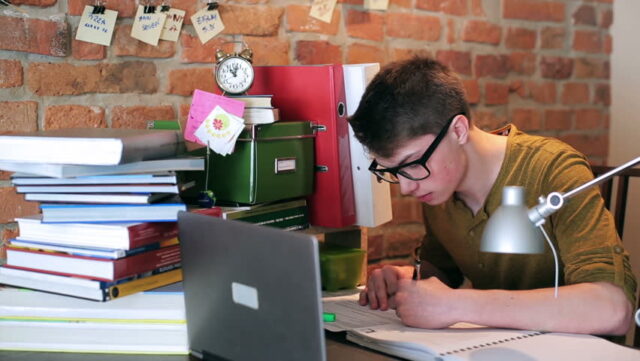
Learning history is fun when a trainer uses engaging pedagogies. Otherwise, it will only make the students hate the subjects even more. Creating the feeling of ‘I love history’ to learners will be a desirable achievement for any teacher. The next line is for teachers and teachers only. History should be a subject worth learning, but it will all depend on the methods of teaching. This was unquestionably worth mentioning! Now let’s get to it.
History encompasses records of ancient history, the origin of mankind, and political achievements in the course of time. It sure is exciting learning some of these things. You’ll learn about wars that saved kingdoms, technological advancements, and the impact of all this to the modern world. So, by creating an engaging and visual chronological of events, it will help to make learning history fun and enjoyable.
Here’s how to make learning history fun:
1. Take Learners to Historical Sites and Events

Historical sites are always worth visiting. This is especially the case when you have a tour guide who knows their history. They’ll take you back in time and in so doing, students will be able to relate their theoretical learning with actual events that happened in the past. Historical events and festivals create an out of the class experience for learners. If you visit this site, you’ll learn about the various places in the world that helped form our modern governments, technology, and religious beliefs.
Krakow, for instance, the official capital of Poland, was once known as the leading center of polish economic, cultural, academic, and artistic life. Every location on our beloved planet has some history behind its development and achievements. Visiting these destination spots will be a great way to learn about past events, and in a way, help students learn about their roots.
2. Textbooks are a Supplementary Tool

An annoying teacher is the one who comes to class with a bunch of history textbooks and starts dictating notes. This is the reason as to why most history students will end up hating this important subject. By merely using a book, you’ll be creating a platform for students to nod off! As a teacher, you need to create a personal connection with your students. You need to take a student’s approach when teaching. Focus on the broader concepts and, while it’s important to focus on the chronology of dates and periods, there’s a great need to add a personal touch to your history lessons.
3. Engage Students in Field Trips and Excursions
Who doesn’t love trips? Your guess is as good as everyone else’s. Historical tours and excursions will not only make students have fun while learning but will also help them conceptualize. Visiting museums will help boost learner’s confidence in real-time and will also create a long-lasting memory of such experiences. This will help to minimize any chances of forgetfulness. You can do this by first conducting research on the nearby historical activities you can undertake as a group and ensure that everyone participates.
4. Utilize Infographics in Your History Lessons

Break the routine! While it might seem like you’re doing your students a favor by telling great stories, they’ll undoubtedly benefit from some visual aids. You want to ensure that your students have a picture of Abraham Lincoln, Roosevelt, and other renowned history makers at the back of their minds. You can do this by investing in some cool pictures of historical figures mounted in the classroom. You can also use re-enacted historical videos to emphasize a topic. The main advantages of using infographics in learning include:
- Displaying a historical timeline
- To illustrate statistics
- When providing important tips
- Increases the awareness of a topic
- Creates interest in learning
You can also use CD players and projectors for the video your classes. You can also engage your students by making them reenact scenes from past events. These are things that will remain engraved in their minds for decades to come.
5. Invite Guest Speakers
Inviting renowned historians or influential figures who know a thing or two about their history will help put a lot of things into perspective. They’ll be crucial in answering important questions from your students, and this will help break the ice the next time you’re introducing a new topic. In a way, this does help to break the monotony.
6. Engaging Students in Creating Crafts and Dioramas

Historical architectures show a visual representation of past events. By encouraging your students to learn ancient arts will help in creating a memorable picture in their minds. Dioramas involve scenic paintings that can be viewed through peepholes. The illuminations and animations can be a great way to visualize historical events and objects.
7. Try Cooking a Historical Recipe
They say that the way to a man’s heart is through the stomach, and this saying couldn’t have come at a better time, especially when learning history. There are, of course, little men and young ladies in your class who are eager to learn what ancient man used to eat. This can be done by going through various recipes in history that have made an impact on modern cuisines.
For instance, you can take your class through ancient Viking recipes that are used to date, the ingredients they used, and the health benefits of such ingredients. This may also work well when explaining ancient lifestyles and family setups. Because come to think about it, the eating habits would determine some social behaviors.
8. Make Good Use of Autobiographies

Biographies are a great way to learn history. They are eye-openers that help reveal historical facts through those who lived it. The list of autobiographies is endless, and the best that you can do is to visit your nearby library and research on the best autobiographies that can help recount some of the most memorable historical events.
On a lighter note, learning history can be engaging, but most importantly, it also needs to be fun. It may require the application of various strategies such as the ones aforementioned and other methods to make it more enjoyable. Check this for more https://teachnthrive.com/teaching-ideas/motivating-students/.







